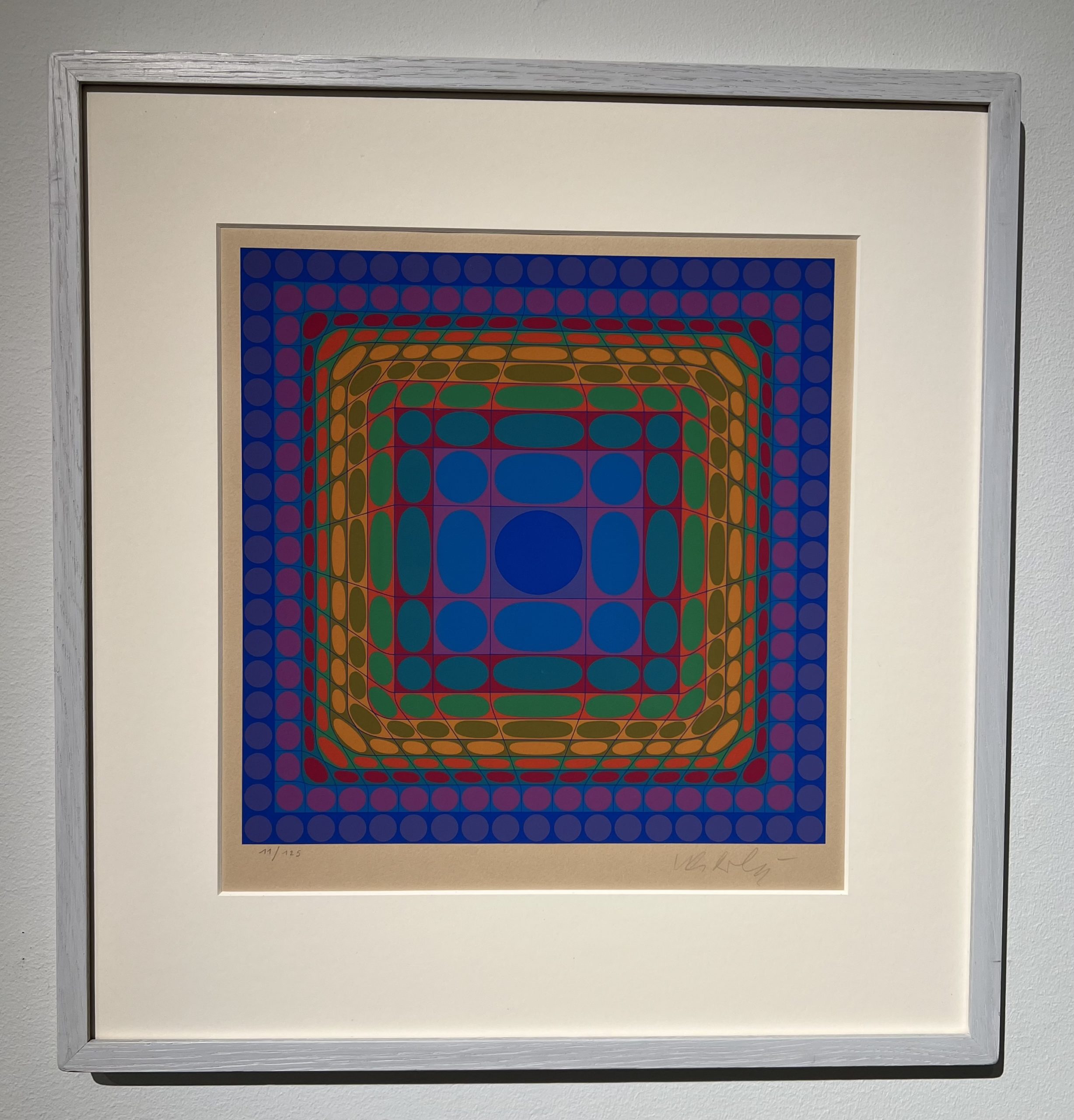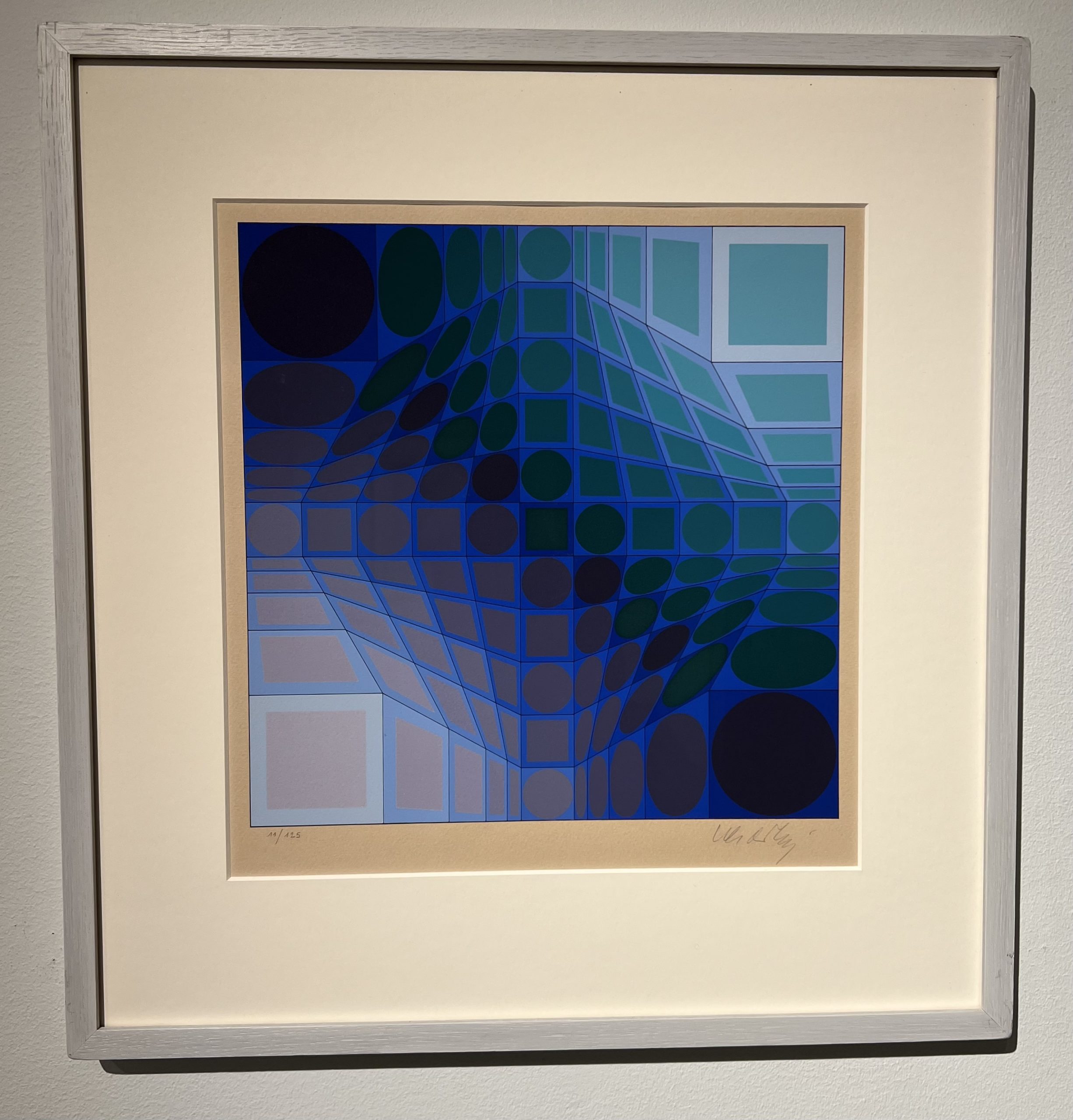Victor Vasarely
Victor Vasarely: 9 April 1906 – 15 March 1997) was a Hungarian-French artist, who is widely accepted as a “grandfather” and leader of the Op art movement.
His work entitled Zebra, created in 1937, is considered by some to be one of the earliest examples of Op art.
Vasarely was born in Pécs and grew up in Pöstény and Budapest, where, in 1925, he took up medical studies at Eötvös Loránd University. In 1927, he abandoned medicine to learn traditional academic painting at the private Podolini-Volkmann Academy. In 1928/1929, he enrolled at Sándor Bortnyik’s private art school called Műhely (lit. “Workshop”, in existence until 1938), then widely recognized as Budapest’s centre of Bauhaus studies. Cash-strapped, the műhely could not offer all that the Bauhaus offered. Instead it concentrated on applied graphic art and typographical design.
In 1929, he painted his Blue Study and Green Study. In 1930, he married his fellow student Claire Spinner (1908–1990). Together they had two sons, Andre and Jean-Pierre. Jean-Pierre was also an artist and used the professional name ‘Yvaral’. In Budapest, he worked for a ball-bearings company in accounting and designing advertising posters. Vasarely became a graphic designer and a poster artist during the 1930s combining patterns and organic images with each other.
Vasarely left Hungary and settled in Paris in 1930. He worked as a graphic artist and as a creative consultant at the advertising agencies Havas, Draeger, and Devambez (1930–1935). His interactions with other artists during this time were limited. He thought of opening an institution modelled after Sándor Bortnyik’s műhely and developed some teaching material for it. Having lived mostly in cheap hotels, he settled in 1942/1944 in Saint-Céré in the Lot département. After the Second World War, he opened an atelier in Arcueil, a suburb about 10 kilometres from the centre of Paris (in the Val-de-Marne département of the Île-de-France). In 1961, he finally settled in Annet-sur-Marne (in the Seine-et-Marne département).
Vasarely eventually went on to produce art and sculpture using optical illusion. Over the next three decades, Vasarely developed his style of geometric abstract art, working in various materials but using a minimal number of forms and colours.




